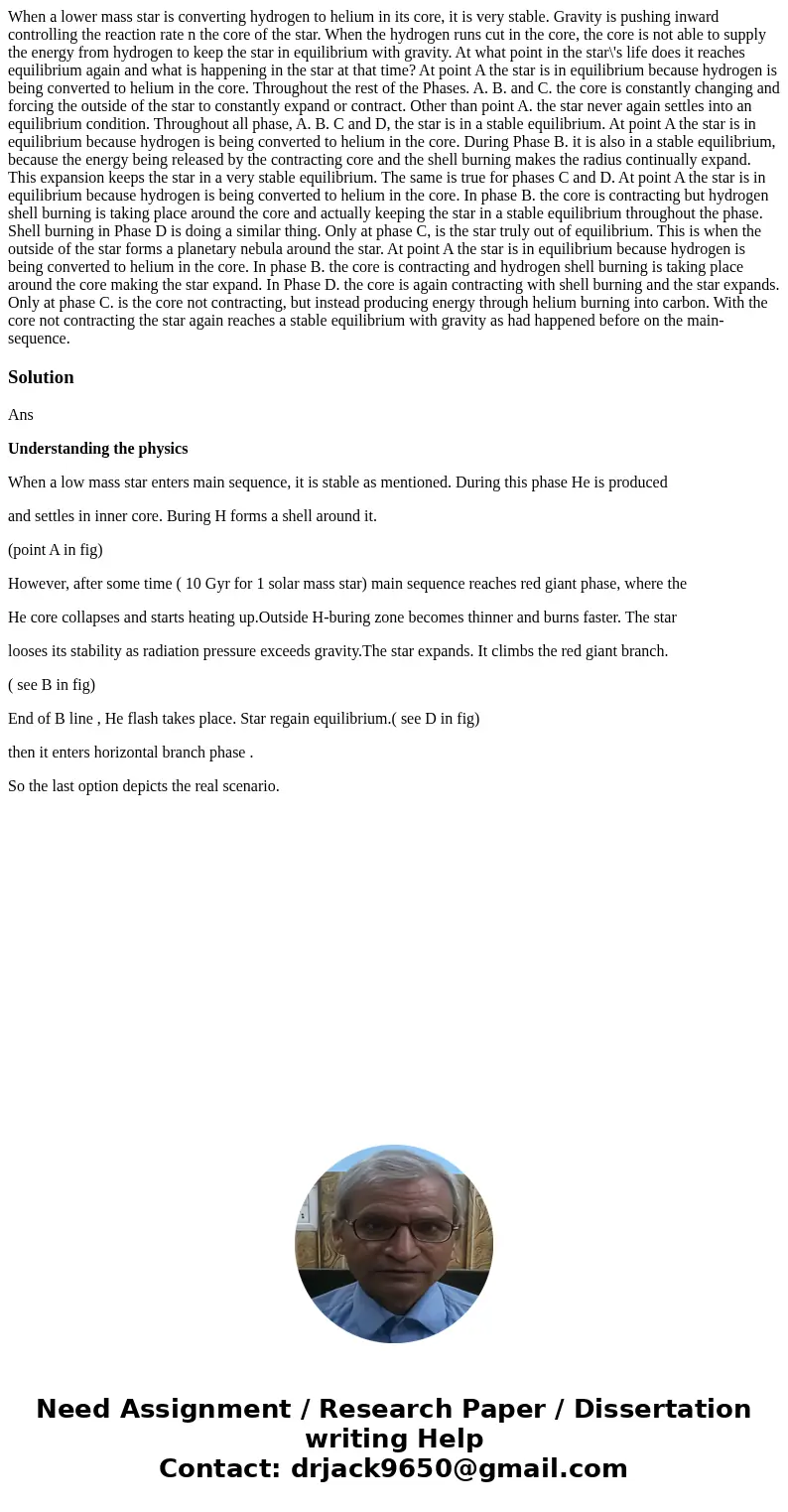When a lower mass star is converting hydrogen to helium in i
When a lower mass star is converting hydrogen to helium in its core, it is very stable. Gravity is pushing inward controlling the reaction rate n the core of the star. When the hydrogen runs cut in the core, the core is not able to supply the energy from hydrogen to keep the star in equilibrium with gravity. At what point in the star\'s life does it reaches equilibrium again and what is happening in the star at that time? At point A the star is in equilibrium because hydrogen is being converted to helium in the core. Throughout the rest of the Phases. A. B. and C. the core is constantly changing and forcing the outside of the star to constantly expand or contract. Other than point A. the star never again settles into an equilibrium condition. Throughout all phase, A. B. C and D, the star is in a stable equilibrium. At point A the star is in equilibrium because hydrogen is being converted to helium in the core. During Phase B. it is also in a stable equilibrium, because the energy being released by the contracting core and the shell burning makes the radius continually expand. This expansion keeps the star in a very stable equilibrium. The same is true for phases C and D. At point A the star is in equilibrium because hydrogen is being converted to helium in the core. In phase B. the core is contracting but hydrogen shell burning is taking place around the core and actually keeping the star in a stable equilibrium throughout the phase. Shell burning in Phase D is doing a similar thing. Only at phase C, is the star truly out of equilibrium. This is when the outside of the star forms a planetary nebula around the star. At point A the star is in equilibrium because hydrogen is being converted to helium in the core. In phase B. the core is contracting and hydrogen shell burning is taking place around the core making the star expand. In Phase D. the core is again contracting with shell burning and the star expands. Only at phase C. is the core not contracting, but instead producing energy through helium burning into carbon. With the core not contracting the star again reaches a stable equilibrium with gravity as had happened before on the main- sequence.
Solution
Ans
Understanding the physics
When a low mass star enters main sequence, it is stable as mentioned. During this phase He is produced
and settles in inner core. Buring H forms a shell around it.
(point A in fig)
However, after some time ( 10 Gyr for 1 solar mass star) main sequence reaches red giant phase, where the
He core collapses and starts heating up.Outside H-buring zone becomes thinner and burns faster. The star
looses its stability as radiation pressure exceeds gravity.The star expands. It climbs the red giant branch.
( see B in fig)
End of B line , He flash takes place. Star regain equilibrium.( see D in fig)
then it enters horizontal branch phase .
So the last option depicts the real scenario.

 Homework Sourse
Homework Sourse